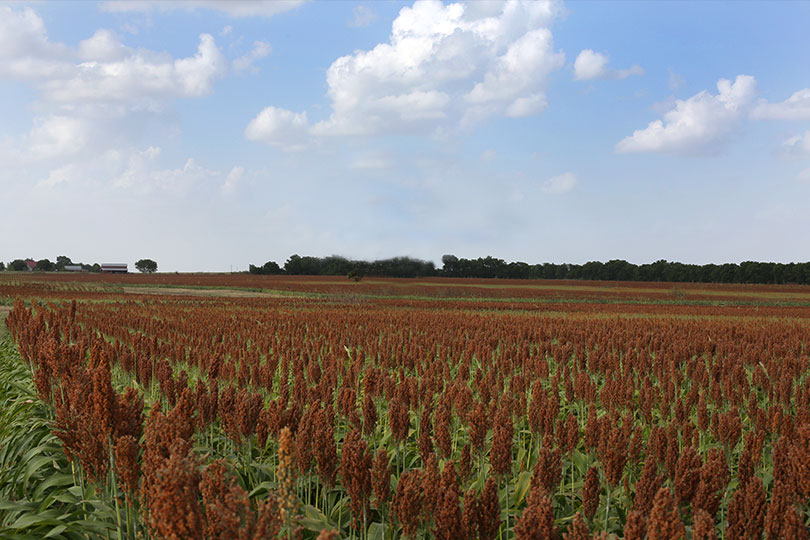By Jennifer Dorsett
Field Editor
During the first week of August, China purchased a record 32 million bushels of U.S. sorghum, according to data from the U.S. Department of Agriculture (USDA) Foreign Agricultural Service.
“U.S. sorghum farmers should be encouraged by these continued sales to China,” National Sorghum Producers and Sorghum Checkoff CEO Tim Lust said. “We are making improvements to our crop not only from a yield and technology standpoint but also through quality measures, which are translating directly to international buyers and noticeably improved basis numbers across the country.”
Sorghum sales for the current market year, which runs Sept. 1, 2019 through Aug. 31, 2020, totaled 282,400 metric tons (mt). An additional 527,000 mt have been sold for the 2020-21 marketing year. Altogether, sorghum sales for the week were more than 809 mt, or about 32 million bushels.
That one week of sales represents about 9 percent of annual sorghum production in the U.S.
“These sales commitments are profound, and like in any other high demand situation, we expect to see basis increases enhance sorghum acres next year,” Sorghum Checkoff Executive Director Florentino Lopez said. “The U.S. Grains Council and sorghum checkoff remain fully engaged with Chinese buyers to help promote U.S. sorghum and provide technical information to leverage future sales while continuing to build future markets in Vietnam, Kenya, India and domestically, as well.”
China announced a series of tariff exclusions, including grain sorghum, following the U.S.-China phase one trade agreement, which had an immediate impact on
U.S. sorghum exports due to the sheer volume China purchases each year.
As of early July, FAS said about 75 percent of all U.S. grain sorghum commitments were headed to China, which imports more sorghum than the rest of the world combined.
Livestock production is highly concentrated in southern China and feed demand is high there, according to FAS.
The agency said even though China has a large surplus of corn, current domestic prices are higher than world levels, so the increase in sorghum sales and shipments reflects the Asian nation’s need for competitively priced alternative feedstuffs.
Sorghum imports into China are not subject to tariff rate quotas, and U.S. sorghum does not face any known biotech or quarantine issues likely to impede trade, FAS added.
It’s good news for Texas sorghum farmers, who, combined with Kansas, account for nearly three-quarters of U.S. grain sorghum production.
“In a year where practically everything else that can go wrong has, it’s a bright spot to see sorghum sales increasing and China working to fulfill the terms of their agreement with the U.S.,” Brant Wilbourn, Texas Farm Bureau associate director of Commodity and Regulatory Activities, said. “In the future, I expect to see some farmers grow more sorghum or maybe start to put sorghum back into their crop rotations. Anything that can help increase profitability and diversification for our farmers, we’re happy about.”

